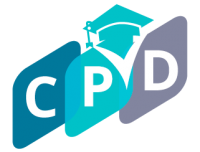Introduction
Active learning is a dynamic pedagogical approach that transforms students from passive recipients of knowledge to active participants in their own learning journey. By engaging students in interactive activities, discussions, and problem-solving tasks, active learning fosters deeper understanding, critical thinking, and a love for learning. In this article, we will explore the significant role of active learning in educational pedagogy and its impact on student engagement and academic success.
Shifting from Passive to Active Engagement
In traditional teacher-centered classrooms, students often play a passive role, absorbing information through lectures and note-taking. Active learning changes this dynamic by encouraging students to actively participate in the learning process. They take on an active role in discussions, debates, and hands-on activities, which enhances their understanding and retention of information.
Fostering Critical Thinking and Problem-Solving Skills
Through active learning, students are challenged to think critically and solve problems independently or collaboratively. Engaging in real-life scenarios and case studies allows them to apply theoretical knowledge to practical situations, honing their problem-solving skills.
Promoting Peer Interaction and Collaboration
Active learning activities promote peer interaction and collaboration, allowing students to learn from and with their peers. Collaborative learning experiences help students develop communication and teamwork skills, essential for success in their academic and professional lives.
Enhancing Retention and Long-Term Learning
Active learning strategies, such as discussions, debates, and hands-on experiments, have been shown to enhance information retention. When students actively engage with the subject matter, they are more likely to remember and apply the learned concepts in the long term.
Fostering Inclusivity and Diverse Perspectives
Active learning encourages all students to participate and share their thoughts and ideas. This fosters inclusivity and ensures that diverse perspectives are heard and respected in the classroom, enriching the learning experience for everyone.
Engaging Different Learning Styles
Every student has a unique learning style. Active learning caters to different learning preferences by offering a variety of activities, such as visual aids, auditory discussions, and kinesthetic experiences. This allows students to engage with the material in a way that best suits their individual learning needs.
Boosting Motivation and Love for Learning
Active learning creates an energetic and stimulating classroom environment that excites and motivates students. When students are actively involved in their learning process, they develop a sense of ownership and excitement about their academic journey.
Preparing Students for Real-World Challenges
In the real world, success often depends on problem-solving, critical thinking, and collaboration. Active learning prepares students for these challenges by equipping them with the necessary skills and mindset to face complexities with confidence.
Conclusion
Active learning is a powerful educational pedagogy that transforms classrooms into vibrant hubs of exploration and discovery. By engaging students in active participation, collaboration, and critical thinking, active learning enhances understanding, retention, and overall academic achievement.
As educators embrace active learning strategies, they empower students to become active agents of their own learning. By nurturing a love for learning and equipping students with essential skills, active learning paves the way for a future generation of confident and competent lifelong learners.
